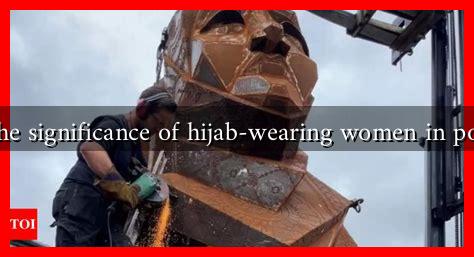-
Table of Contents
What is the Significance of Hijab-Wearing Women in Pop Culture
The hijab, a traditional headscarf worn by many Muslim women, has increasingly become a symbol of identity, empowerment, and cultural representation in pop culture. As society evolves, the portrayal of hijab-wearing women in media, fashion, and entertainment has shifted, reflecting broader conversations about diversity, feminism, and cultural acceptance. This article explores the significance of hijab-wearing women in pop culture, highlighting their impact on representation, empowerment, and social change.
The Evolution of Representation
Historically, hijab-wearing women have often been marginalized or misrepresented in mainstream media. However, recent years have seen a notable shift in this narrative. The representation of hijab-wearing women has become more nuanced and varied, showcasing their diverse experiences and identities. This evolution can be attributed to several factors:
- Increased Visibility: The rise of social media platforms has allowed hijab-wearing women to share their stories and experiences, creating a more authentic representation.
- Influential Figures: Public figures such as Ibtihaj Muhammad, the first Muslim woman to compete for the U.S. in the Olympics while wearing a hijab, have brought visibility to hijab-wearing women in sports.
- Fashion Industry Changes: Designers and brands are increasingly incorporating hijabs into their collections, promoting inclusivity and diversity in fashion.
Empowerment Through Representation
The representation of hijab-wearing women in pop culture serves as a powerful tool for empowerment. By showcasing their stories, talents, and achievements, these women challenge stereotypes and redefine societal norms. Some notable examples include:
- Rihanna’s Fenty Beauty: The brand’s inclusive marketing campaigns feature hijab-wearing models, promoting the message that beauty comes in all forms.
- Muslim Influencers: Influencers like Dina Tokio and Nabela Noor use their platforms to advocate for body positivity, self-love, and cultural pride, inspiring millions of followers.
- Television and Film: Shows like “Ramy” and films like “The Big Sick” feature hijab-wearing characters, providing a more relatable and authentic portrayal of Muslim life.
Challenging Stereotypes and Misconceptions
Hijab-wearing women in pop culture play a crucial role in challenging stereotypes and misconceptions about Islam and Muslim culture. By presenting diverse narratives, they help to dismantle harmful stereotypes that often dominate media portrayals. This is particularly important in a world where misinformation can lead to prejudice and discrimination. Some key points include:
- Humanizing Narratives: By sharing personal stories, hijab-wearing women humanize their experiences, fostering empathy and understanding among audiences.
- Breaking Barriers: Their presence in various fields, from sports to entertainment, challenges the notion that hijab-wearing women are oppressed or limited in their choices.
- Promoting Dialogue: Their visibility encourages conversations about cultural differences, religious beliefs, and the importance of acceptance in a multicultural society.
The Impact on Society
The significance of hijab-wearing women in pop culture extends beyond representation; it has tangible effects on society. Research indicates that positive representation can lead to:
- Increased Acceptance: Exposure to diverse narratives can reduce prejudice and foster acceptance of different cultures.
- Empowerment of Young Women: Young hijab-wearing girls see role models who inspire them to embrace their identity and pursue their dreams.
- Encouragement of Inclusivity: Brands and media outlets that prioritize diversity contribute to a more inclusive society, where everyone feels represented.
Conclusion
The significance of hijab-wearing women in pop culture cannot be overstated. Their representation challenges stereotypes, empowers individuals, and promotes inclusivity in society. As more hijab-wearing women take center stage in various fields, they continue to inspire change and foster understanding. By embracing their identities and sharing their stories, they pave the way for a more diverse and accepting world. The journey towards representation is ongoing, but the impact of hijab-wearing women in pop culture is a testament to the power of visibility and the importance of diverse narratives.
For further reading on the topic, you can explore resources such as HuffPost’s article on hijab in pop culture.

